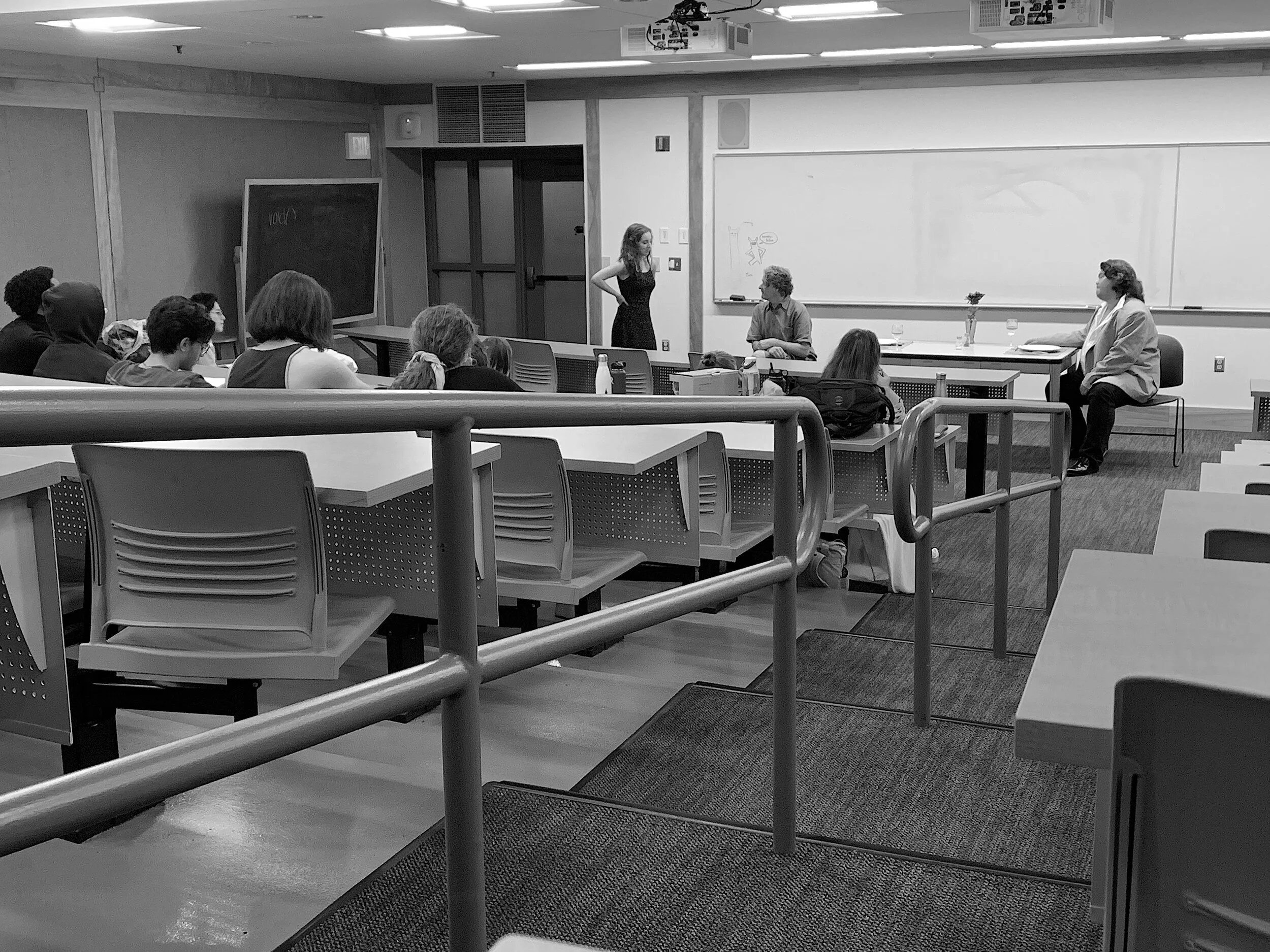The mind does
not require filling like a bottle, but rather, like wood, it only requires kindling to incite one towards originality and instill the ardent desire for truth.
—Plutarch
As an educator
I bear the responsibility of igniting in students a steadfast motivation toward self-knowledge. By sharing my experiences and explorations, I seek to incite in students an adventurous spirit of inquiry. This mantle shapes the learning objectives and methods for all my courses. I want students to leave the classroom feeling both challenged and encouraged, acquiring a habit of mind that supports their own growth as creative, mindful bodies.
My primary aim is to impart liberal arts values by engaging the whole student—kinesthetically, creatively, intellectually and empathically—in an ensemble-building environment. I believe the arts serve a profound role in a humanistic, liberal arts education. By providing experiential learning, the arts disciplines foster creativity, develop visual and emotional literacy, strengthen our ability to listen to ourselves and others, promote interdisciplinary collaboration and encourage democratic inclusion.
As I have personally experienced, actors benefit from combining objective with physical and vocal action―learning to develop relationships through movement and sound, creating individual and collective life through the body and voice. In his essay On Listening in Moralia, Plutarch writes that the student should “acquire a habit of mind that is not sophistic or bent on acquiring mere information, but one that is deeply ingrained and philosophic, as we may do if we believe that right listening is the beginning of right living.” I seek to create curricula, class environment and connection with students that will promote this larger learning goal.
To this end I have created Somaesthetic Voice, a combined movement/voice praxis in a group environment that sustains and optimizes the actor’s instrument. Importantly, actor-action and imagination vitalize all exercises. The concept began by combining my research of MXAT School’s curriculum with my extensive work under Nancy Houfek (Fitzmaurice Voicework), Lyndon Branaugh (Laban/Bartenieff Fundamentals), and Steve Paxton (Contact Improv). All exercises promote an embodied self-knowing through a cycle of awareness and facility. The integrated warmup re-activates innate alignment and movement patterns of body, breath and sound that we are born with and see in children. This process, to Connect+Correct, slowly unearths a stable and resonant neutral from which the actor can most sustainably work. Run in parallel is a secondary process to Stretch+Strengthen the fluency of vocal pitch along with range of bodily motion; sound resonance and placement along with body shape and use of space; volume along with effort actions of weight and time; consonants and vowels along with clarity of physical articulation; and, prosody along with movement flow.
When teaching actors, I have three primary learning goals:
Stability―to generate personalized pallets of tools to correct functional limitations and asymmetries that distort body/vocal awareness
Mobility―to give students the opportunity to explore the edges of their instrument
Somatic & Group Intelligence―to instill experiential appreciation for the interconnectedness of breath, body, voice and meaning
In my experience these learning goals are best pursued in a classroom climate that is collaborative yet sensitive to individual differences in learning. It is a vulnerable experience to work so intimately with one’s own instrument―voice, breath and body. The learning process is developmental and can be challenging not only intellectually, but also emotionally. I therefore take special care in creating a safe, welcoming space. As we all learn in different ways, I use a variety of approaches―from dialogue to demonstration, group games to private reflection, and of course, art-making.
For example, whether I am teaching voice & speech or modern dance, I give a lecture on the anatomy of breathing with my dear friend, Yorick the skeleton. I then have the students engage with the interactive 3D app Essential Anatomy 5, where they can peel away the skin, go through each layer of muscle, watch the diaphragm work from all angles, see how the ribs move, and even explore the role our nervous system plays in breathing. I then gather four students for a hands-on demonstration called the breathing machine. We then pair off to experience our own breathing mechanism, deepening inner awareness as well as gaining external feedback from our partner. Based on these experiences, the students then create their own performance etude. I have found that students respond to this dynamic approach with genuine curiosity and productive discourse.
I assess student learning by mid-semester surveymonkey links that students do online.
This helps me course correct where need be. I also receive end of year course evaluations.
For my Movement course, student X wrote:
“Rebecca is so passionate and knowledgeable about her craft and made it a blast to learn. And she has a way of relaying it that really connected with us. I learned more about myself in this course than any other.”
From my Acting course, student Y writes:
“I loved this class! Especially how collaborative it was. I feel like I got challenged physically and intellectually. I like the “meaning arcs” she talks about. Oh and the warm-ups were fantastic and really helped me get in touch with my body and voice.”
